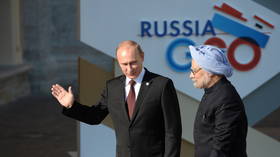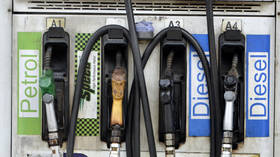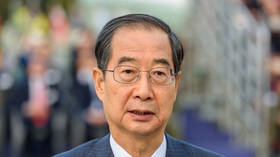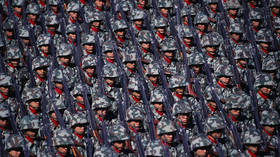Toxic cloud from Mosul sulfur plant fire suffocates region (PHOTOS, VIDEO)
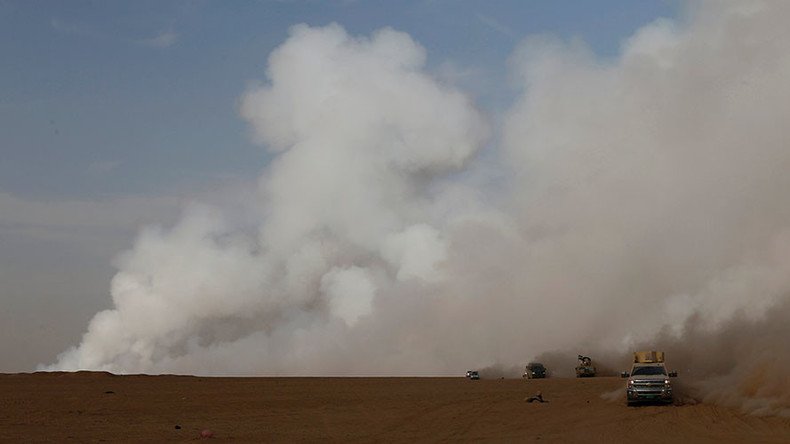
A sulfur mine and stockpile set ablaze by Islamic State terrorists has produced a huge toxic residue cloud, along with some apocalyptic scenery. The fire, set near Mosul, was aimed at slowing down Iraqi troops attempting to retake the city.
The Al-Mishraq sulfur plant and mine were set on fire last Thursday, Iraqi commander Qusay Hamid Kadhem told AFP. At least two civilians in nearby villages have reportedly been killed from sulfur dioxide exposure, and 1,000 others have been treated for breathing problems.
According to scientists, the sulfur dioxide emission is “significant” and alarming.
#IS set fire on sulfur deposits at the outskirts of #Mosulpic.twitter.com/t3GGeWAL0a
— Syria frontlines (@SyriaWarReports) 25 октября 2016 г.
The large sulfur dioxide cloud has been spotted by The Ozone Monitoring Instrument (OMI) on NASA’s Aura spacecraft and the Ozone Mapping Profiler Suite (OMPS) on Suomi NPP. It has been seen spreading cross northern and central Iraq.
The impact of the fire at the Sulfur plant (detonated by #ISIS), south of Mosul. Scary... pic.twitter.com/SUgZSG0bdp
— Michael Horowitz (@michaelh992) 26 октября 2016 г.
IMAGE: Sulfur Dioxide levels in Iraq following sulfur mine fire set by ISIS - @NASAEarthpic.twitter.com/sCsVScA6ZGhttps://t.co/OE6BDk8WXE
— Conflict News (@Conflicts) 25 октября 2016 г.
The sulfur dioxide emission is comparable to what typically takes place during a large volcanic eruption.
SO2 from the #Iraq sulfur fire, Oct 25. If fire = #volcano, it would be among the largest eruptions of 2016 (a quiet year so far) @NASANPPpic.twitter.com/TGJak3Pxcr
— Simon Carn (@simoncarn) 25 октября 2016 г.
The same sulfur field was on fire for one month in 2003, with scientists estimating that 21 kilotons of toxic sulfur dioxide were emitted daily during that time period.
“After nearly a month of burning, the 2003 fire had released roughly 600 kilotons of sulfur dioxide - so much that it was the largest non-volcanic release of sulfur dioxide we had ever observed with satellites,” said Nikolay Krotkov, an atmospheric scientist at Goddard Space Flight Center.
Surreal scenes today south of Mosul: burning oil and sulfur set on fire as ISIS retreated pic.twitter.com/hhjXWQ3r3W
— Jared Malsin (@jmalsin) 23 октября 2016 г.



